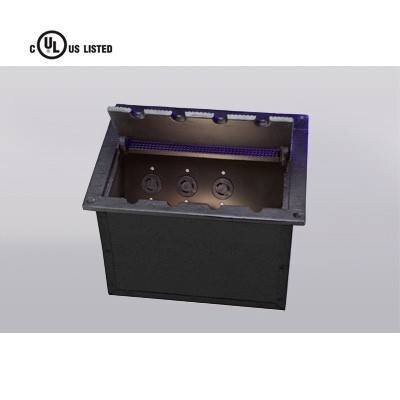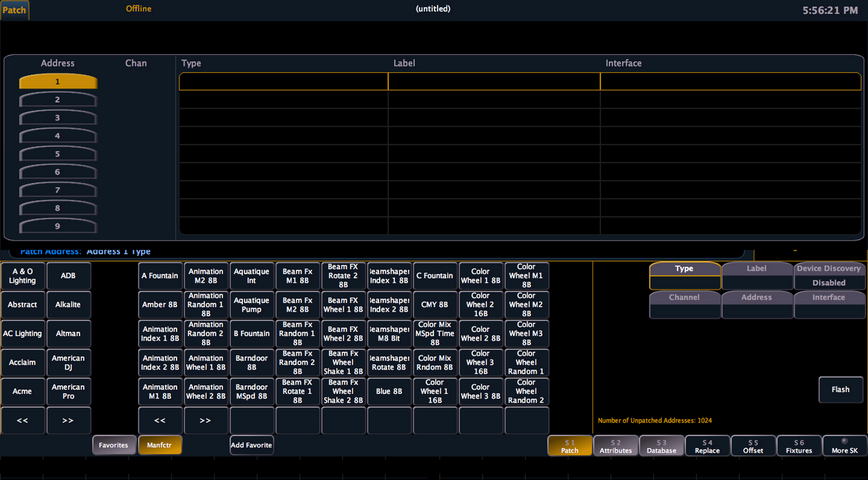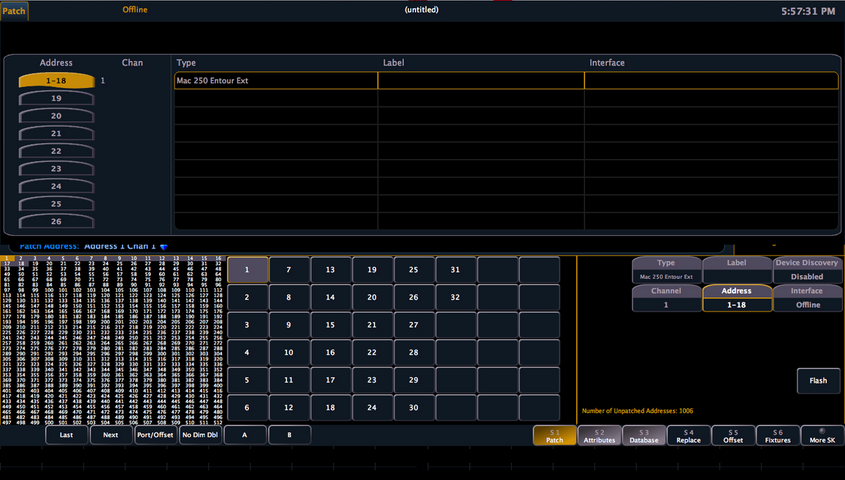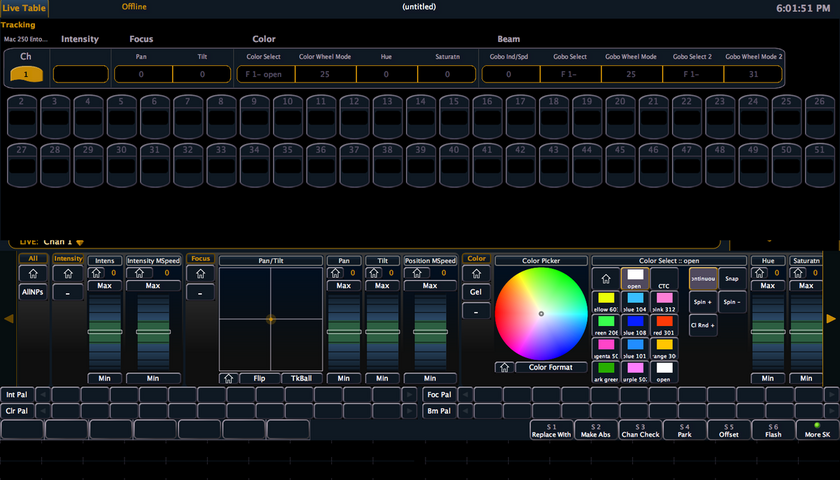My school recently received a donation of two moving head spots. We have not had moving lights before, but we have the ETC element which is capable of running them. My question is regarding hooking them up. I have several stage boxes with all twist-lock connectors. Is there a way to run these lights through the stage boxes? Is there a adapter to go from the twist-lock to XLR 5-pin? Any help would be greatly appreciated.
You are using an out of date browser. It may not display this or other websites correctly.
You should upgrade or use an alternative browser.
You should upgrade or use an alternative browser.
Control/Dimming DMX Question
- Thread starterkk18758
- Start date
NO! Those twist locks are dimmed power only. You need to plug your moving heads into non-dimmed power... like a regular wall outlet. Plugging your movers into dimmed power (even if it's always turned on to full) can damage the electronics of your movers. What type of dimmers do you have? (Brand/Model) You may be able to swap in a truly non-dimmed module into your rack.
Depending on your theater you may have some DMX out jacks located near your electrics, near your dimmer racks, just randomly in your catwalks, walls... there are many places you may have DMX connections. Or you may have none and have to run a line directly from the console to your movers. Also remember that DMX cable is NOT the same as microphone cable.
If your program is really poor it is possible to make dmx cables from cat5 and some ethernet/DMX adapters. It's not ideal but it works for substantially less money. Search CB for more on that.
Depending on your theater you may have some DMX out jacks located near your electrics, near your dimmer racks, just randomly in your catwalks, walls... there are many places you may have DMX connections. Or you may have none and have to run a line directly from the console to your movers. Also remember that DMX cable is NOT the same as microphone cable.
If your program is really poor it is possible to make dmx cables from cat5 and some ethernet/DMX adapters. It's not ideal but it works for substantially less money. Search CB for more on that.
Last edited:
Yes, but it needs to be a 5 pin Twist-Lock.
From the thread http://www.controlbooth.com/forums/question-day/7066-adapters.html :
See below for the correct answer.What purpose do these two pictured adapters serve and what are their proper names?
Moving lights, LED s, and most accessories need two connections:
Power (constant power, like from a wall outlet, not from a dimmer) and data (usually DMX512 via 5pin XLR).
.
Les
Well-Known Member
Sounds like this is your first go with moving lights  . Gaff and Derek are right - you have to plug your movers in to non-dimmed power. I'd also like to emphasize that a channel run or 'parked' at full will not suffice.
. Gaff and Derek are right - you have to plug your movers in to non-dimmed power. I'd also like to emphasize that a channel run or 'parked' at full will not suffice.
The 5-pin XLR's you see are for data, not power (much like how your board connects to the outside world, except that your board sends DMX and your lights receive/pass-thru DMX). Also, confirm the voltage that your lights need to operate. While many are switchable or auto-sensing, you will want to make sure of what your situation is so you don't plug a mover set up for 220v in to a 120v outlet, or vise-versa.
I'd also suggest downloading the user manual for your moving lights and reading it carefully. There are lots of idiosyncrasies that you will need to be aware of, like not letting the initialization cycle/homing process alarm you, how long the lamp takes to strike, how long before it can be re-struck after being lamped off, proper shut down procedures, etc.
Best of luck! Keep this site bookmarked and let us know if you have any more questions!
The 5-pin XLR's you see are for data, not power (much like how your board connects to the outside world, except that your board sends DMX and your lights receive/pass-thru DMX). Also, confirm the voltage that your lights need to operate. While many are switchable or auto-sensing, you will want to make sure of what your situation is so you don't plug a mover set up for 220v in to a 120v outlet, or vise-versa.
I'd also suggest downloading the user manual for your moving lights and reading it carefully. There are lots of idiosyncrasies that you will need to be aware of, like not letting the initialization cycle/homing process alarm you, how long the lamp takes to strike, how long before it can be re-struck after being lamped off, proper shut down procedures, etc.
Best of luck! Keep this site bookmarked and let us know if you have any more questions!
Last edited:
I want to clarify that while yes there are twist locks that carry DMX, since you are in a high school I find it extremely unlikely that your twist locks are for DMX. Your's are in all likelihood only for dimmed power. If they are dimmed power, using a twist lock to DMX adapter would destroy your movers. You are probably talking about something that looks like this:

Unless your theater's dimming system is pretty new construction, odds are good that you have a few extra DMX input locations (move your board around to control lights during rehearsal and light hang), but you probably have have very few (or possibly no) DMX outputs in the theater.

Unless your theater's dimming system is pretty new construction, odds are good that you have a few extra DMX input locations (move your board around to control lights during rehearsal and light hang), but you probably have have very few (or possibly no) DMX outputs in the theater.
Last edited:
mozsey
Member
Do you know what dimmer rack you have?
The reason this is important, like gaff said, is because dimmed power is a HUGE no no. You can install non-dim units in most racks for control from the board (also known as relays) or constant power (where you'll have to flip the breaker from the rack itself) so you have control over power. This can be used in two ways. 1.) you don't have to worry about an extension cord to offstage and 2.) if you get the relay pack, you can use inhibitors on the Element to turn the power on to the units, and not worry about having to turn them off when the board is off.
Now, if you're a highschool student this is something you shouldn't be dealing with yourself. Always seek help or bring it to someones attention that you would like to use these lights.
The reason this is important, like gaff said, is because dimmed power is a HUGE no no. You can install non-dim units in most racks for control from the board (also known as relays) or constant power (where you'll have to flip the breaker from the rack itself) so you have control over power. This can be used in two ways. 1.) you don't have to worry about an extension cord to offstage and 2.) if you get the relay pack, you can use inhibitors on the Element to turn the power on to the units, and not worry about having to turn them off when the board is off.
Now, if you're a highschool student this is something you shouldn't be dealing with yourself. Always seek help or bring it to someones attention that you would like to use these lights.
mozsey
Member
I want to clarify that while yes there are twist locks that carry DMX, since you are in a high school I find it extremely unlikely that your twist locks are for DMX. Your's are in all likelihood only for dimmed power. If they are dimmed power, using a twist lock to DMX adapter would destroy your movers. You are probably talking about something that looks like this:
View attachment 8778
Unless your theater's dimming system is pretty new construction, odds are good that you have a few extra DMX input locations (move your board around to control lights during rehearsal and light hang), but you probably have have very few (or possibly no) DMX outputs in the theater.
Most new theatres are being set up with ETC NET3 actually, so having DMX outputs all over the place is nothing out of the odd.
A few close to you in Seattle would be Issaquah and Liberty High Schools.
Lazerlight
Member
Once you get the lights hooked up correctly with non dimmed power and a dmx input, I can tell you the steps for controlling them on the Element. You don't patch them like normal dimmers, you go to your patch window and select the address you want to patch them to. There should be a box in the corner of the screen that says type. Click that, choose the other button that says manfactr and choose the make and modle of your mover. Then give it a channel number and it should be patched in. Now select the channel in your live window and hit the ml control button. You should be able to control it from there.






Even if your donation was some crap that was built 20 years ago, the LAST thing you want to do is break it before the first show.
1. READ THE MANUAL.
2. READ THE MANUAL. AGAIN.
3. Make 100% sure that the things you're connecting the lights to are the proper connections. Make sure your power and data are correct. Then check again, since this is likely your first go at a moving light.
4. BE PATIENT. Learning a new tool doesn't happen overnight. Take the time to master the equipment.
1. READ THE MANUAL.
2. READ THE MANUAL. AGAIN.
3. Make 100% sure that the things you're connecting the lights to are the proper connections. Make sure your power and data are correct. Then check again, since this is likely your first go at a moving light.
4. BE PATIENT. Learning a new tool doesn't happen overnight. Take the time to master the equipment.
Similar threads
- Replies
- 7
- Views
- 428
- Replies
- 16
- Views
- 2K
- Replies
- 5
- Views
- 666
- Replies
- 12
- Views
- 1K
Users who are viewing this thread
Total: 1 (members: 0, guests: 1)



